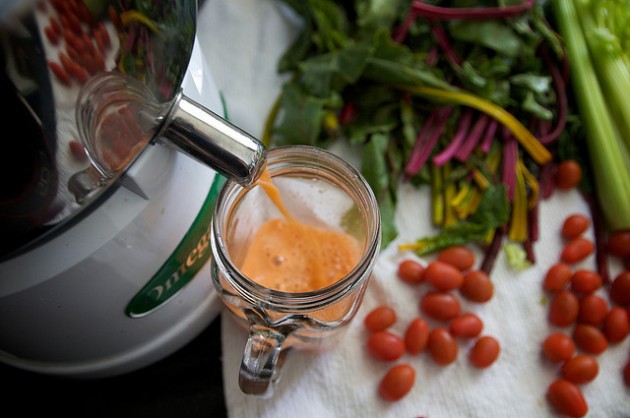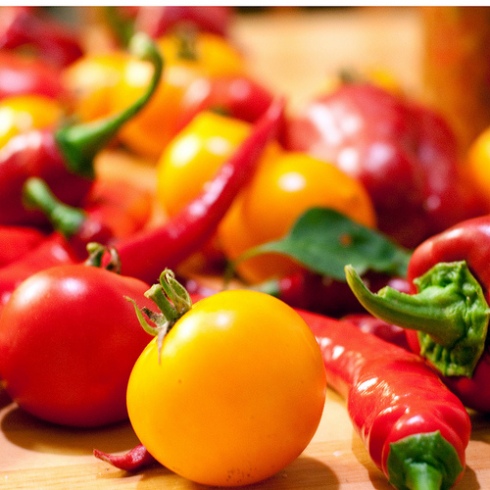Inflammation isn’t all bad. It is one of our natural defences. If we sprain an ankle, it will swell to help protect that area until our body has started to heal. The immune system is the same. When effected by outside sources such as bacteria or viruses, the immune system will cause inflammation until the problem has been resolved. The issue for some comes in when the immune system stays switched on due to an auto-immune disease such as crohn’s, rheumatoid arthritis, diabetes; skin problems like psoriasis and eczema; as well as food intolerances like histamine intolerance and gluten intolerance.
When I started researching and experimenting with anti-inflammatory foods back in 2008, there was very little information out there on the subject. I was suffering from recurring pericarditis, which is an inflammation of the lining that surrounds the heart muscle. Pericarditis can be very painful, and at the time I was put on very high doses of NSAIDS, which worked in the short-term to control the pain and inflammation, but seemed to do nothing to reduce the length of time the condition remained present. Also having to take them in such high doses for an extended period of time left me with side effects. So this led me to search for a different way to treat and try to prevent this illness from happening in the future.
Anti-inflammatory foods are the main dietary change that I’ve found have really made a difference in my health and well-being. But this is not a diet I am suggesting. This is a lifestyle change! A way of eating that helps to prevent illness from occurring in the first place, and to manage that which you might already have. It’s not good enough to change the way you eat only when you feel or fall ill. It must be something that you commit to in order to regain and remain in good health. For many people there are three major things that you can do to help reduce inflammation:
1. No soft drinks/refined sweets including diet (replace with water, fresh ginger tea, green tea, and fresh juices)
reason: these substances increases levels of inflammatory messengers called cytokines.
2. No processed pre-packed foods/fried foods (if you can’t pronounce it, please don’t eat it!)
reason: this food increases inflammatory markers and promotes high cholesterol and heart disease
3. Cook most of your meals at home and take your own lunch to work
reason: you’ll make healthier choices, can incorporate items from your AI diet, and you’ll save money!
Avoiding dairy is something that a lot of lists tell you to do. I eat dairy almost every day, as long as it’s fresh (cream cheese, fresh goats cheese, ricotta, milk) and organic. Current research points to dairy not having an effect on inflammatory markers but this obviously does not apply to you if you are sensitive to dairy in the first place. If your body rejects it, it’s a sign to remove it.
Such a lifestyle change takes commitment, but when you’re able to run up the stairs without aches and pains, find you have loads more energy and are no longer nauseous and itchy all the time, then you’ll understand why it’s so important! Here’s my master list. Keep in mind that not all foods are for everyone and you need to make sure to exclude the foods that aren’t suitable for your food intolerance or other dietary restrictions. I’ve marked the foods that are not suggested for those with histamine intolerance and salicylate sensitivity.
Arugula (SS?)
, Broccoli (SS),
Brussels Sprouts
, Cabbage, Cauliflower, Celery,
Fennel Bulb (SS)
, Garlic (SS),
Green Beans,
Green Onions/Spring Onions (SS)
, Kale,
Leeks (SS),
Olives (HI)
, Spinach (HI),
Sweet potatoes (SS), Zucchini (SS).
Fruits
Acerola Cherries (HI),
Apples (golden delicoius are OK with SS),
Avocados (HI) (SS)
, Black Currants (HI) (SS),
Blueberries (SS),
Fresh Pineapple (HI) (SS),
Kiwi (SS),
Lemons (HI) (SS),
Limes (HI) (SS),
Oranges (HI) (SS),
Raspberries (HI) (SS),
Strawberries (HI) (SS),
Tomatoes (HI – the green ones are OK) (SS).
Proteins
Almonds (HI) (SS), Cod (HI)
, Flaxseed
, Halibut,
Herring (HI),
Lemon Sole,
Rainbow Trout (HI), Salmon,
Sardines (HI?),
Snapper Fish (HI?),
Sunflower Seeds,
Tuna (HI), Walnuts (SS),
Whitefish. (Fish must not be farm raised, for those histamine intolerance it must be very fresh or frozen from fresh)
Oils
Ghee, Flaxseed Oil
, Olive Oil (SS),
Fish Oil.
Beverages
Fresh Ginger Tea (SS), Green Tea (HI) (SS),
Dandelion Tea
, Nettle Tea.
Herbs and Spices
Basil (SS)
, Boswellia,
Butterbur,
Chillis (SS)
, Cinnamon (HI) 8SS)
, Cloves (HI) (SS),
Cocoa (raw cacao or 70% + dark – in small amounts if you are histamine intolerant) (SS),
Ginger (SS),
Holy Basil (SS),
Mint (SS),
Nigella Sativa (SS),
Oregano (SS),
Parsley,
Rosemary (SS),
Thyme (SS),
Turmeric (SS).
This list was a bit daunting to me in the beginning as I travel a lot for my work and was eating lots of stuff I should have been consuming. (Crisps, sweets, etc.) My leg up in the situation is that I am trained as a chef and have done quite a lot of recipe development for my places of work. I now find that the easiest way for me to make sure I’m getting proper nutrition and anti-inflammatory foods on a daily basis is to have a fresh juice at least once per day. I usually have mine first thing in the morning. I find that I am able to travel with my juicer and shop along the way no matter where I am. Here’s a basic recipe of my juice each morning:
1 fennel bulb
1 rib of celery
1/2 cucumber
2 carrots
2 apples
1 handful of kale, romaine (peashoots even better!)
You can also add in 1/4 inch piece of fresh ginger if you need it
There are lots of other great anti-inflammatory recipes out there. Here are some more from my blog:
12 Minute Vegetable Soup
Spicy African Stew (omit the dumplings)
I wish you all success and health in your own experimentation with an anti-inflammatory diet. As with all dietary changes, it is a good idea to consult your doctor or a resourceful nutritionist before making any major changes.
Further Inspiration from people who have used anti-inflammatory foods to heal their bodies:
The Low Histamine Chef: Yasmina is a journalist and researcher who writes amazing cookbooks based on anti-inflammatory and anti-histamine foods. Her level of commitment to researching and learning to heal herself (and others) naturally is truly inspiring.
Sondi Bruner: Sondi is a writer and a holistic nutritionist who has successfully weaned herself of all medication for her Crohn’s disease by eating healthy unprocessed foods. Her recipes are simple and delicious and there is a wealth of information to be found at her website.
Further reading:
No drug, anti-inflammatory diet shows positive results in clinical trials
http://www.medicalnewstoday.com/releases/45447.php
Online Health Chat with Amy Jamieson-Petonic
Harvard Medical School on what you eat can fuel or cool inflammation.
Nutrition and inflammation data on multiple foods









